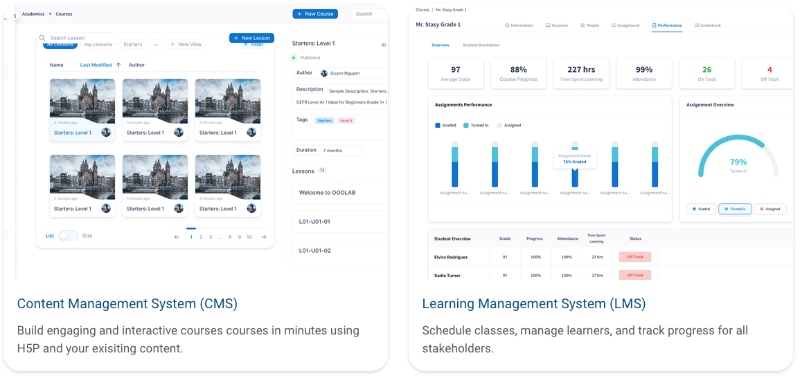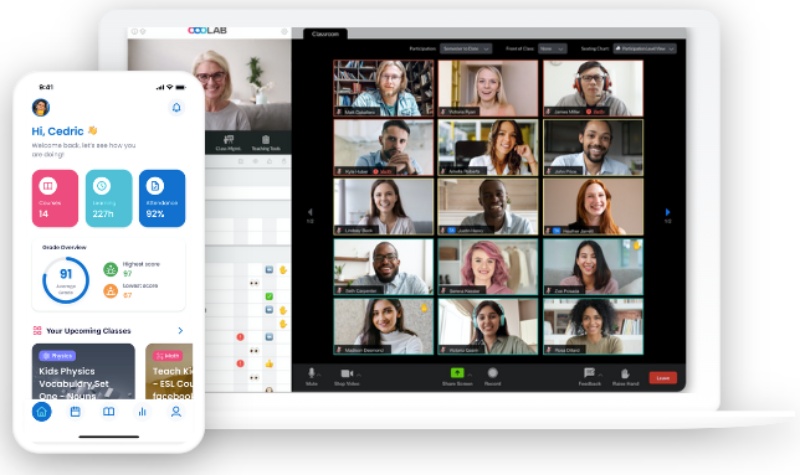LMS vs. CMS: What’s the Difference? Which One Is Right For You?

LMS and CMS are two of the most commonly confused acronyms in the education industry. If your enrichment center is thinking about setting up and implementing an LMS, or a CMS, then one letter can make a huge difference.
First of all, LMSs and CMSs are essential tools for eLearning. Whether you're delivering classes in-house, or online, using a LMS and / or CMS will help keep your operations running smoothly all the way from enrollment to engagement.
But what is the difference? And which one is right for you? This article aims to answer those questions and give you a few pointers on which one you’ll need for your business.
How are they Similar?
A LMS and CMS are similar in many ways. Both systems allow enrichment institutions to create and edit educational content which can be stored in a centralized content library. Both systems let administrators and eLearning developers update simultaneously and allow colleagues to review changes and leave comments. They both allow learners to access the system remotely and learn at their own pace via desktop or mobile devices. Finally, they each offer performance tracking; such as progress and course completion reports, login data, and assessment scores.
Also, for both LMS and CMS systems the end user is the same. Sure enough, the learner is at the heart of all enrichment, or learning centers, but this is where the similarities end. Enrichment and learning centers using solely an CMS system will begin to have a widely different operational experience than a learner using a innovative LMS system.
How are they Different?
I’d say that a CMS is like an ice cream cone, but without the sauce, sprinkles, or cherry. It’s still a delicious treat, a welcome respite from the summer heat of the office, but it could be better. A LMS, on the other hand, offers so much more in terms of functionality.
They offer:
- Integration of third-party applications
- Individual dashboards for admin
- Advanced tracking
If we dive deeper into the modern LMS and you’ll discover it’s on another level.
The Proof is in the Pudding
The proof that today's LMSs are superior to their CMS counterpart lies in the user's learning journey. One stand-out feature of an LMS is its ability to tailor courses to learners' needs and create customized learning paths.
After LMS users take a digital placement test, the LMS can create a series of learning objectives and learning goals based on the student's ability, which in turn suggests appropriate educational content. Curriculum development teams can effortlessly create a personalized strategy for each learner. something that a CMS doesn’t do very well.
But that's not all...
On top of customized learning paths, LMSs come with amazing features to analyze and measure the individual learner journey class by class. Learner Analytics can be used to:
- Track learner’s engagement in a course
- Identify areas where learners may need additional support or guidance
- Identify class content that is ineffective, or confusing
The way that the LMS can create and monitor learning paths with actionable insights benefits learners in an unprecedented way. And if the learners are succeeding, this success will reflect nicely on your Learning Center.
Which One is Right for You?
All enrichment and learning centers operate slightly differently, but if you want to deliver educational content effectively with the learner at the heart of it you’ll need a LMS that incorporates all the best features of a CMS! Today’s LMS systems are more than capable of performing everything a CMS can do and more. And these extra trimmings might be the features your organization needs to boost sales.
Introducing the LMS / CMS Fusion
Get the best of both worlds with LearningOS from OOOLAB. It really is in a world of its own.

It seamlessly integrates and LMS / CMS and making it easy to create personalized learner paths and generate learner analytics. It boasts remote accessibility, gamified dashboards, and advanced tracking making sure the learners can engage socially and collaboratively. It also helps curriculum developers create and design content easily and lets administration staff enroll and allocate courses effortlessly. It’s the crème de la crème of LMSs.

If you’re interested in implementing the best content and learning management system, then reach out to us here at OOOLAB. We offer a simple solution that’ll provide you with the most efficient learning system — LearningOS.
Contact a LMS expert here and discuss how LearningOS can help your enrichment center.
—--------------
We know companies can't keep up with the trends that are driving technological advances. If you’re still using an outdated LMS or CMS, then don’t worry. OOOLAB’s LearningOS allows companies to merge any existing systems they are already using. Old data, records, and courses can be integrated alongside brand-new features.
Learn more about switching up systems here: thelearningos.com/contact
If you've still got room for dessert then here's another essential acronym... LXP, stands for Learner Experience Platform. Click the link to learn more about the difference between an LMS and LXP here.


